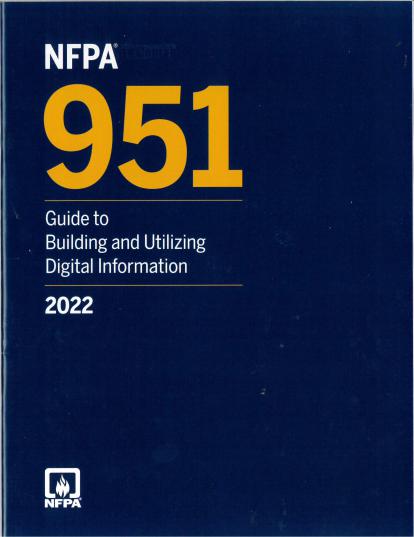NFPA 951,
Guide to Building and Utilizing Digital Information, helps you design, implement, and maintain an operable, standards-based information management environment for all-hazards emergency response.
Information technology management is a relatively new endeavor for many professionals in fire and emergency services; however, competency in this area is critical to data interoperability in mutual and automatic aid environments. Information technology management is critical to help keep emergency responders and the public safe, improve outcomes, and establish metrics. NFPA 951, Guide to Building and Utilizing Digital Information, is your source for envisioning, building, integrating, and maintaining information systems. It is a vital companion to NFPA 950, Standard for Data Development and Exchange for the Fire Service, which provides the basic framework for developing an accurate and compliant information technology program for fire and emergency services.
NFPA 951, Guide to Building and Utilizing Digital Information, supports NFPA 950 and fosters more effective data exchange through technology planning at the department level.
With a compliant information technology program, a wide range of users — from system developers and IT professionals to fire chiefs, authorities having jurisdiction (AHJs), and anyone conducting system assessments — can find extended references and resources for all types of associated data systems commonly used by fire and emergency service organizations, including:
- Computer aided dispatch (CAD)
- Record management systems (RMS)
- Geographic information systems (GIS)
Identify and follow the best practices for digital information management to ensure information systems are in compliance.
Access the resources you need to support a communications pathway for all the relevant components of the national preparedness and response framework. NFPA 951, Guide to Building and Utilizing Digital Information, addresses analysis, data management, field operations, and situational awareness in both mutual and automatic aid environments. The chapters cover:
- Process — strategic visioning, technology strategic planning, and ongoing needs assessments
- Data administration — managing both internal and external data
- Data sharing and exchange — following protocols established by the Federal Geographic Data Committee (FGDC)
The 2022 edition of NFPA 951, Guide to Building and Utilizing Digital Information, includes several updates:
- A new records management chapter has been added to encompass as many conceivable uses of data as possible.
- The chapters have been restructured to make them easier to use and to better align with NFPA 950.
- Adjustments have been made to reflect emerging and new technology that was not available when the previous edition was published.
Turn to NFPA 951, Guide to Building and Utilizing Digital Information, for the guidance, references, and support required for effective and efficient information systems.


